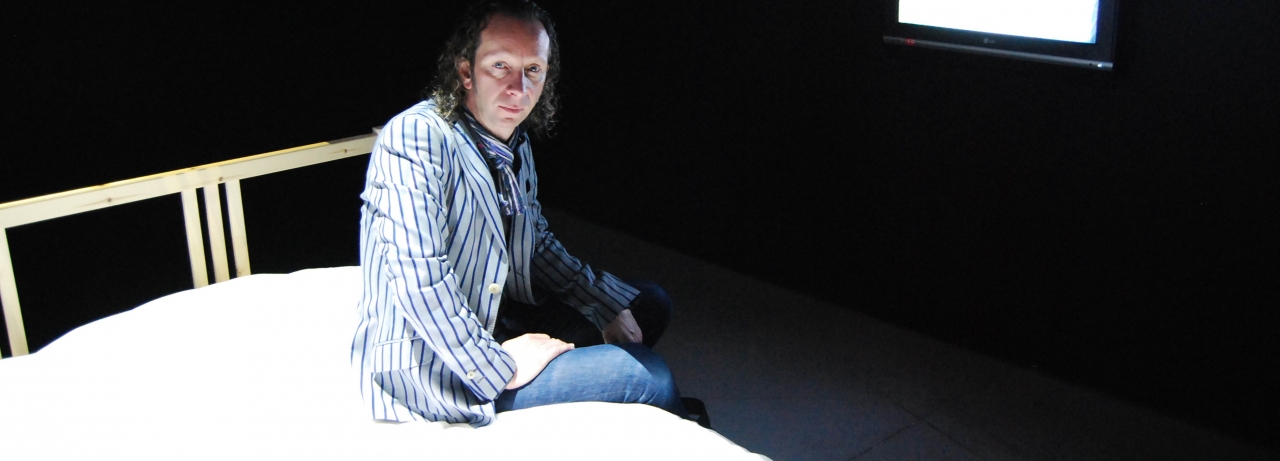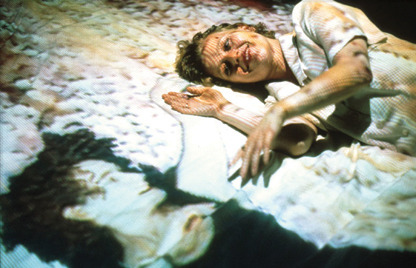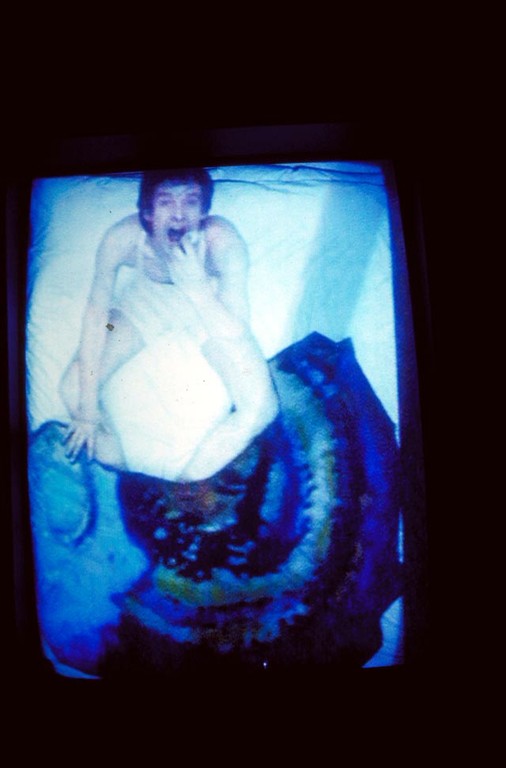Paul Sermon is dedicated in pushing the boundary of interactive telematic installations which emphasizes the sense of users’ experience. I think that the core idea of Paul’s works inherits the concept of the “composite-image space,” discussed in “Welcome to ‘Electronic Cafe International ‘ ” written by Kit Galloway and Sherrie Rabinowitz, and originated from the prototype of the electronic cafe in 1984.

“Composite-image space mixed live images from remote places and presented the mix at each location so performers could see themselves on the same screen with their partners.”—“Welcome to ‘Electronic Cafe International ‘ “
This idea is ubiquitous in Paul’s installations and easily seen in his “Telematic Dreaming.” This project takes place between two beds from different rooms which could be thousands of miles away from each other. Performers in each room can see the high-resolution projected image of others from the other room. In this kind of experience, the performers exchange their tactile senses by replacing their hands with their eyes. And I would like to quote the similar view from “Welcome to ‘Electronic Cafe International.’ ”
“In designing such spaces, we look not only at their qualities and aesthetics, but how people interact when they are disembodied and their image is their “ambassador.” “

I consider that ambassador(or called as telepresent) of the physical presence is a key element in the telematic installations and how to make the personal experience immersive in its own avatar depends on the techniques of technology, the intensity of interactivity and the materials that are picked up to present the meanings. In “Telematic Dreaming,” it presents high-resolution projected image within the ISDN digital telephone network, making the ambassador vivid. Besides, performers can interact and “touch” the ambassador of others in real-time. What’s more, I think it’s astute that choosing the beds as a spectacle because the symbol of the bed is relaxing and intimate, and performers can easily enter this field, a surreal but intimate space. The spectacle mixed with computer graphics and other images projected in this environment blurs the line between the real world and the virtual reality experience. Therefore, I think this is the reason why “Telematic Dreaming” is one of eminent telematic interactive projects.


Very good! I like the way you wove the idea of the ambassador through your research critique. The ambassador I understand from your essay is a representation in the virtual space, since the two physical bodies never meet. You are right, the ambassador functions an avatar, however not the kind we are typically familiar with in digital form, but here an actual body in a physical space that is connected to another physical space within the telematic environment. You are right then at the end by saying there is a blurring of the real and the virtual as this combination of local and remote spaces merge into what I refer to as the third space. Was there anything from the essay by Roy Ascott, “Is There Love in the Telematic Embrace,” that might have supported your thoughts on intimacy in virtual spaces? This is definitely something we will discuss further tonight when we have Paul Sermon as our guest speaker.